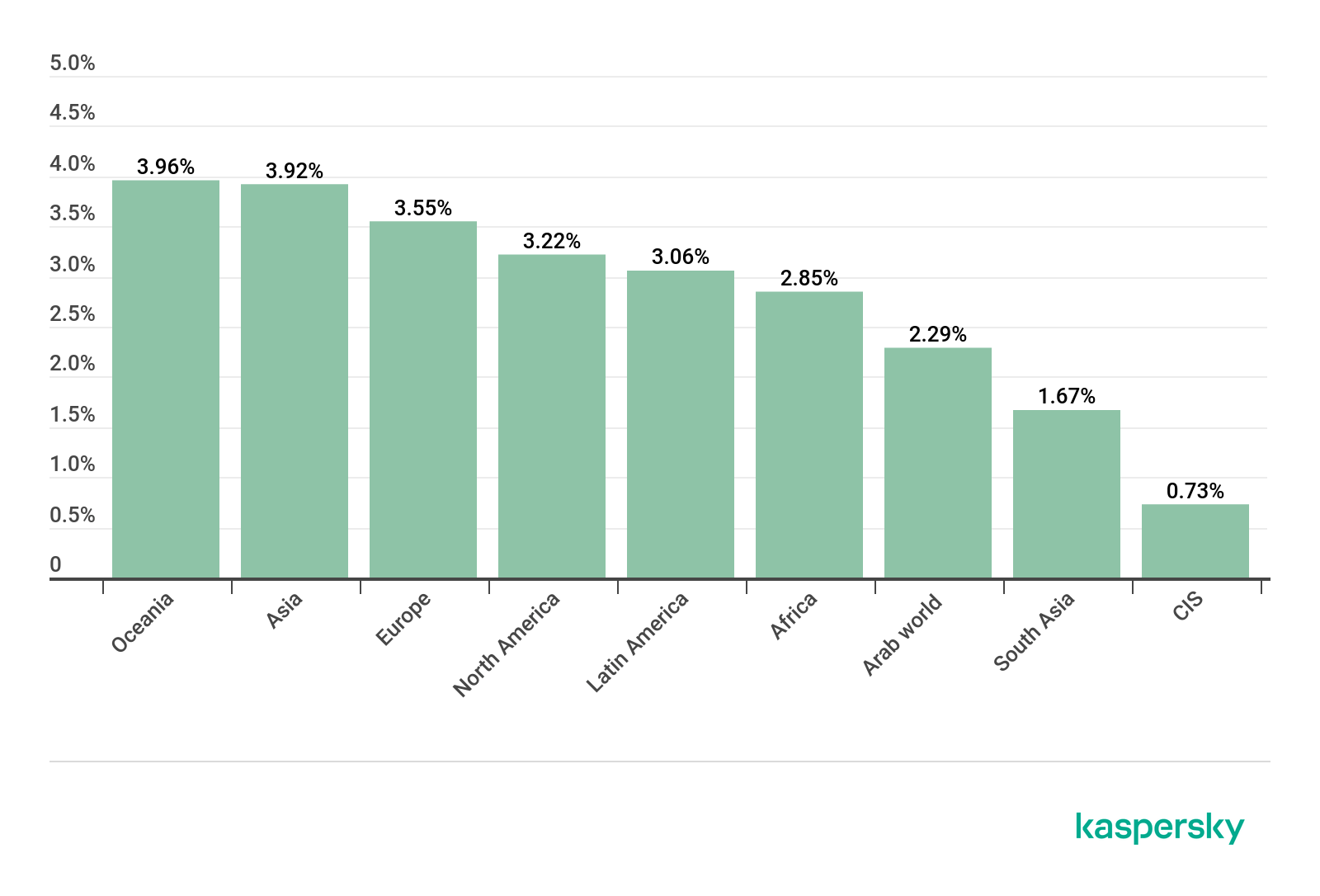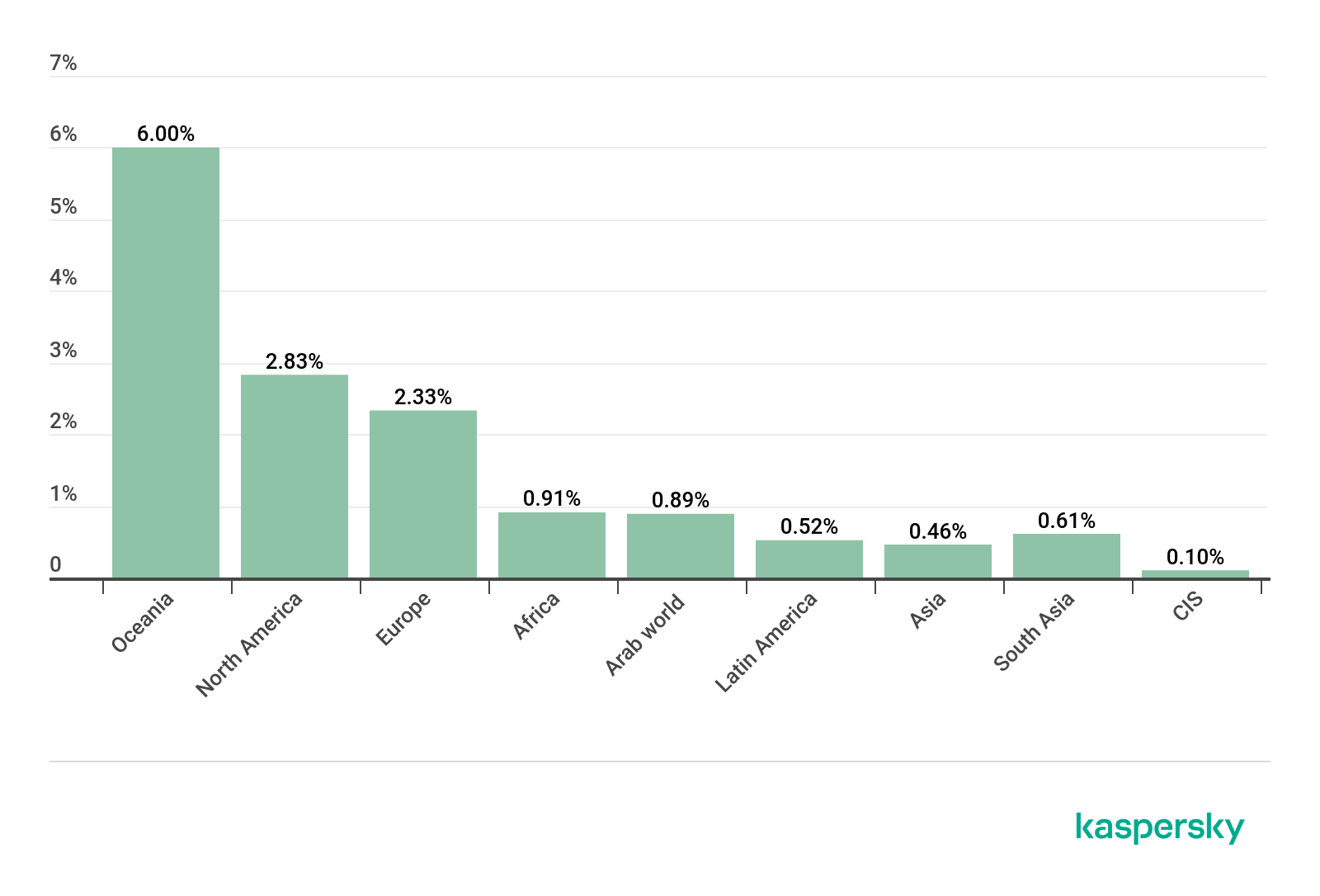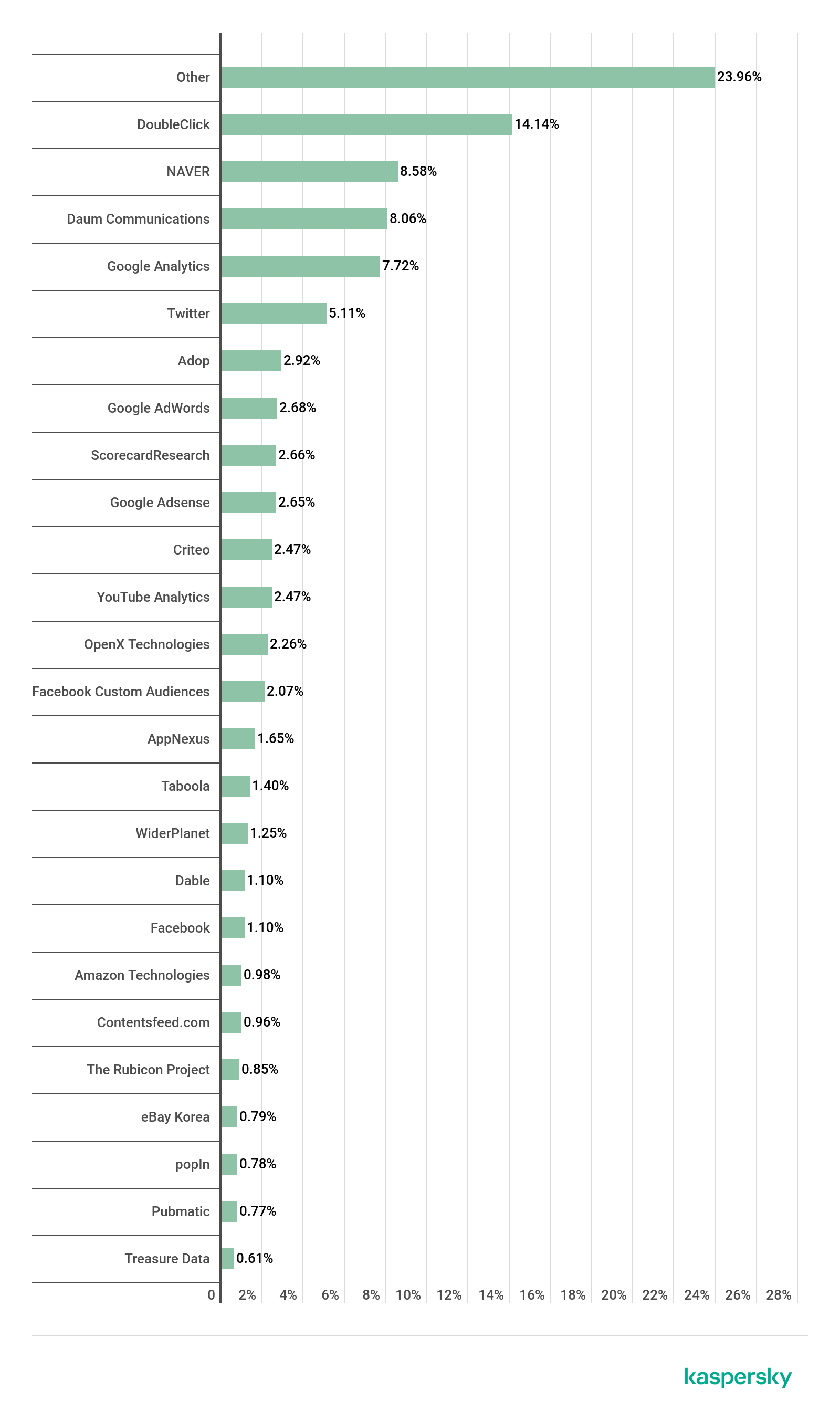
Who owns data owns the world. And with the Internet taking over much of our daily lives, it has become far easier and faster to receive, collect, and analyze data.
The average user cannot even imagine how much data gets collected on them. Besides technical information (for example, about a smartphone) harvested by a manufacturer to patch vulnerabilities, companies also collect and analyze user behavior patterns, including interests, lifestyle, hobbies, and habits. And whereas a few years ago the phrase “Marketers rule our lives” sounded like some kind of Masonic conspiracy theory, today it is an obvious truth. All our online movements and actions on websites are, in their totality, a valuable product.
Why is it important for marketing and advertising agencies to know so much about us? Simple. The more data they have on us, the more accurately we can be assigned to a particular consumer group. And the more nuances about the consumer group are known, the more precisely and efficiently it can be targeted with advertising or new products that meet (or anticipate) its needs.
That is why companies that harvest and analyze data are keen to have up-to-date information about consumer preferences. And that is also why almost all websites deploy trackers that collect information about what users are doing there, what goods they are looking at, etc. All this is relevant not only to the world of sales and advertising, but to our social and political lives, too — trackers on news sites, for example, might potentially manipulate our opinions by tracking our interests and offering news of a certain kind.
That said, the majority of tracking campaigns are aimed specifically at showing ads to a range of target audiences. There are many companies in the world that collect and analyze data and provide full-cycle advertising services, but precious few of them are giants. Yet they account for most of all data collected. Besides global giants, there are regional ones that sometimes collect even more information than their international counterparts (which may indicate a fairly independent online space in that region).
Interestingly, such regions and countries are usually distinctive by their language. For instance, in Russian-speaking countries trackers from Russian companies dominate; in China the same goes for Chinese firms, as it does for Japanese, Korean, and Czech companies in their respective countries. A deeper look reveals the connections between some of these regions. For example, the Top 25 list of trackers in Russia features Chinese solutions. Therefore, when analyzing statistics from different regions and countries, we can infer which companies have the most data about which regions.
How the statistics were collected
For this report we used anonymous statistics collected during the September 2018 – September 2019 period from the Do Not Track (DNT) component, which prevents the loading of tracking elements that monitor user actions on websites. The 100% reference value was all DNT triggerings for all trackers in each region or country. DNT is part of Kaspersky Internet Security, Kaspersky Total Security and Kaspersky Security Cloud solutions, and is disabled by default.
Tracking services
First, we will look at the biggest trackers, which according to our statistics are found in almost every country or occupy the top spots in their home region. Jumping ahead, we will say that almost all of them belong to multinational giants.
Google controls the world’s largest advertising network (see our post explaining how online advertising works for more info about advertising networks) — DoubleClick (in 2018 Google announced plans to rebrand the platform and merge it with its own advertising ecosystem). Hence, Google can be considered right now as the world’s largest harvester of global user data (which we will return to more than once in this article).
Besides DoubleClick, Google has several other trackers that form part of the company’s huge advertising network. The first is Google Analytics, which collects and provides visitor stats to resource owners. The second is Google AdWords, for placing ads, and the third is Google AdSense, for those who sell ads on their own resources.
To illustrate the reach of DoubleClick, here’s a chart that shows the share of DoubleClick and Google in each of the regions:

DoubleClick and Google’s share of triggerings in each of the regions, 02.2018 – 02.2019
The relatively small share in North America is due to the presence of other large-scale trackers in the local market, such as AOL Advertising and Moat.
AOL Advertising
AOL Advertising, an online advertising agency, is part of Oath Ad Platforms, owned by Verizon Media (a subsidiary of Verizon Communications). The AOL Advertising tracker is found in all regions and countries.

AOL Advertising’s share of triggerings in each of the regions, 02.2018 – 02.2019
Moat
US company Moat not only does advertising, but also collects and analyzes user data, including, for example, heatmap analytics (tracking cursor movements on an ad or website to analyze and identify user behavior).

AppNexus
AppNexus is a US advertising agency that, like other tech firms engaged in advertising, collects and analyzes user data to show targeted advertising. Based on our data, AppNexus has the largest share in the Oceania and Asia regions:

Adloox
A French company that offers efficiency verification and other analysis for ads. The largest share of Adloox tracking fell to the Oceania region:

YouTube Analytics
This tracker collects data on video viewings, and thus helps show relevant videos and ads to users.

This tracker is located mainly on Facebook pages. What’s more, the company has another tool that we consider a separate entity — Facebook Custom Audience. It uses a tracking pixel embedded in pages to monitor standard events, custom actions, and custom conversions.

Note that in countries where Facebook is most popular, the Facebook tracker performs better than the Custom Audience tracker.
ScorecardResearch
This company does market research, harvesting user data on different websites. Its largest share is in Latin America.

Yahoo Adversting
Like AOL Advertising, this tracker is owned by Verizon, and places personalized ads in Yahoo search results and other pages of the service. Additionally, the company provides the Yahoo Web Analytics service, which allows users to analyze visitor behavior on their websites. It should be said that Yahoo services are very popular in the Asia region, especially Japan.

Mail.ru Group
Mail.ru Group trackers are mainly distributed in the Russian-language segment of the Internet. They are found not only on the pages of Mail.ru services, but on the vast majority of websites in Russian. Mail.ru Group and Google are the two largest players in the CIS.

Yandex.Metrica
Another tracker often encountered in CIS countries is Yandex.Metrica from Russian online firm Yandex. The tracker analyzes user behavior and evaluates website traffic, which involves the collection and analysis of user data and audience profiling and modeling. This company’s trackers are very often found on Russian-language resources.

Regions
North America
To start with, let’s take a look at the situation in the homeland of the largest multinational tech firms, whose trackers we detected through DNT.
For convenience, instead of a graph, we give tables of the Top 25 trackers for each region.
As we see, first place in North America (Canada, US) goes to the company that appears in every regional top list and in every country covered in this article — the giant DoubleClick. The most popular sites in North America on which this tracker is used are youtube.com, kijiji.ca, msn.com, ebay.com, zillow.com, weather.com, macys.com, kohls.com, and facebook.com.
In second place in North America is AOL Advertising; this tracker was blocked most frequently by our users on msn.com, xfinity.com, aol.com (naturally), weather.com, kijiji.ca, and thegamer.tv.
Moat trackers came third. They are encountered most often on msn.com, aol.com, espn.com, hulu.com, cnn.com, foxnews.com, thestar.com, and kijiji.ca.

Europe
In Europe (Austria, Belgium, Czech Republic, Denmark, France, Germany, Hungary, Ireland, Italy, Liechtenstein, Luxembourg, Monaco, Portugal, Spain, Sweden, Switzerland, UK), with its different language segments, the situation is not as clear-cut as in North America. However, the giants still lead the pack.

First and second positions go to DoubleClick and Google Analytics, while third belongs to Amazon Technologies tracker, which analyzes buying activity on company websites and offers ads for its products on partner sites. Looking at its share in different regions, we see that Europe claims the largest percentage, followed by North America.

Unsurprisingly, we detected this tracker most often on amazon.de. Next come amazon.co.uk, amazon.it, amazon.es, and amazon.fr. Besides Amazon’s native sites, this tracker is also found on libero.it, orange.fr, web.de, dailymail.co.uk, bild.de, and imdb.com.
Not all countries in the Europe region are topped by DoubleClick. For example, an exception is the Czech Republic, where our solutions most often blocked trackers from Seznam.cz — a local portal with a search engine where ads are placed.

Oceania
Another largely English-speaking region is Oceania (Australia, New Zealand). As expected, the picture here is similar to North America and Europe.

Besides DoubleClick and Google, in second place we see Adloox, already observed in the Top 10 trackers in North America and Europe. In Oceania, Adloox is most frequently encountered on news.com.au, carsales.com.au, msn.com, gumtree.com.au, metservice.com, and stuff.co.nz.
South Asia
In the South Asia region (Bangladesh, India), the picture is very similar to what we have already seen in North America, Europe, and Oceania: the undisputed tracking leader is again Google with DoubleClick.

Arab world
In the Arab countries (Algeria, Bahrain, Djibouti, Egypt, Iraq, Jordan, Kuwait, Libya, Oman, Qatar, Saudi Arabia, Sudan, Tunisia, UAE, Yemen), Facebook is very popular; it is used for business promotion, communication, shopping, and much else besides. Facebook’s tracker ranks fourth in the Top 25, higher than in other regions.

Latin America
In Latin America (Argentina, Bolivia, Brazil, Chile, Colombia, Dominican Republic, Ecuador, Guatemala, Haiti, Honduras, Mexico, Panama, Peru, Puerto Rico, Uruguay, Venezuela), the picture is similar to the global one. But in this region, alongside Google, DoubleClick, and Facebook, we see ScorecardResearch among the most common names. In Latin America, attempts to collect data using this tracker were most often blocked on uol.com.br, msn.com, twitch.tv, and globo.com.

Africa
The last region where the Top 25 trackers differ little from the overall global picture, is Africa. In the Top 10 we see the familiar names, as well as Yahoo Advertising, which is found not only on yahoo.com and other Yahoo pages (for example, mail.yahoo.com), but on other resources too, including msn.com, jumia.co.ke, jumia.com.ng, sbtjapan.com, beforward.jp, quickteller.com, and dailymotion.com.

Asia
The Asia region (China, Hong Kong, Indonesia, Japan, South Korea, Macau, Malaysia, Singapore, Taiwan) is very different from the rest of the world. Looking at the top trackers in the region overall, we see ones from Japanese and Chinese companies in the list. In addition to the names we know, there are many local ones too. Moreover, the tracker ratings for each country in the region differ from each other. As a result, the countries in this region should be considered separately.

China
In China, the trackers most often encountered by our users come from Alibaba, which collects data on user behavior and interests in the group’s own online stores: alibaba.com, aliexpress.com, taobao.com. Since AliExpress is known practically worldwide, Alibaba’s tracker also features in the Top 20 in Azerbaijan, Belarus, China, Hong Kong, Kazakhstan, Libya, Macau, Moldova, Malaysia, Russia, Taiwan, Tajikistan, Uzbekistan, and Yemen. Moreover, its presence was registered in almost all countries where our security solutions are used. In second place is the “Chinese Google” — Baidu.

South Korea
Here, as in most countries with an unfenced Internet, DoubleClick leads the way. That said, the local giant Naver, already known as the “Korean Google,” is catching up. Also in the top list are many local companies, such as Daum Communications (Kakao since 2014) and the advertising platform ADOP Inc.

Japan
The Japanese tracking market is not that much different from the global one; except that the Top 20 includes local firms: MicroAd (marketing), Samurai Factory, i-mobile (advertising platform), and others.

CIS
The CIS (Armenia, Azerbaijan, Belarus, Kazakhstan, Kyrgyzstan, Moldova, Russia, Tajikistan, Uzbekistan), is dominated by the Russian-speaking segment of the Internet, with well-developed online technologies and local Internet giants, such as Mail.ru Group and Yandex. But as in most countries around the world, the local leaders are challenged by DoubleClick.

Conclusion
The Internet is a common space for all people of the world. Wherever they are, be it Peru, Djibouti, or Germany, most use the same resources. The degree of distinctiveness and detachment of certain geographical Internet spaces depends on many factors, for example, the development of a country’s Internet technologies, what languages are spoken there, and how open or closed the government politics and the society in general is.
As we saw from the statistics, tech giants that collect and analyze data to show us targeted advertising are present practically everywhere in the world. And it is these companies that store the most data about people from all over the planet.
On the one hand, data collection and analysis means that we are shown content and products of interest to us, and vendors get to improve their offerings based on user experience (UX). But on the other, the idea of all our online actions being harvested and used to supplement a profile that some company has on us is not overly pleasant. To guard against unwanted tracking, you can simply block tracking services from slipping their “beacons” into downloaded content. For this, you need to activate the DNT (Private Browsing) component in Kaspersky products. See the Kaspersky Security Cloud guides for details of how to do so.



















Data collectors